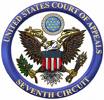Law School Hosts Regional Writing Conference
 This weekend, from Friday evening through Saturday, the Law School hosted the Central Region Legal Writing Conference, welcoming more than 100 attendees, not only from the central United States but from all over the country. The theme was “Climate Change: Alternative Sources of Energy in Legal Writing,” and those who attended seemed energized by the interesting speakers and lively discussion among faculty who teach research and writing skills.
This weekend, from Friday evening through Saturday, the Law School hosted the Central Region Legal Writing Conference, welcoming more than 100 attendees, not only from the central United States but from all over the country. The theme was “Climate Change: Alternative Sources of Energy in Legal Writing,” and those who attended seemed energized by the interesting speakers and lively discussion among faculty who teach research and writing skills.
Professor Alison Julien took the lead in organizing this conference, and several participants (including Mark Wojcik at the Legal Writing Prof Blog) remarked upon how well the event was organized and run. The biggest testament to its success, I think, is that conference participants have encouraged Marquette to serve as the host school again.
The conference featured a diverse range of interesting topics, and though I was unable to attend every session, the six I attended are representative: Collaboration in Teaching and Scholarship; Update on Interdisciplinary Skills Scholarship (presented by our visiting Boden Professor of Legal Writing, Michael Smith); The Six Things You Can Do in a Contract; Assigning Clients in Persuasive Writing Assignments; Using Literature to Teach Theme Development in Persuasive Writing, and How to Identify and Counter Logical Fallacies (presented by Prof. Melissa Greipp). The sessions were informative and thought-provoking, and I left the conference thinking of ways I can improve my teaching and engage in scholarship.
Many thanks to everyone who made the event a success, including, especially, Dean Kearney, Prof. Julien, Sharon Hill, Beverly Franklin, Carol Dufek, and many student volunteers.

 If Congress makes an obvious error in drafting a statute, can a court correct that error by effectively adding something to the statute that is not there? Such was the interesting jurisprudential question the Seventh Circuit confronted last January in United States v. Head, 552 F.3d 640 (2009). Because of a mix-up with statutory cross-references, the statute that lists permissible conditions of supervised release in the federal system does not include assignment to a halfway house. However, the first seven circuits to consider the question held that sentencing judges could indeed order placement in a halfway house, reasoning that a literal interpretation of the statute would produce an absurdity. In Head, the Seventh Circuit bucked the trend and rejected the government’s absurdity argument. (My post on Head is
If Congress makes an obvious error in drafting a statute, can a court correct that error by effectively adding something to the statute that is not there? Such was the interesting jurisprudential question the Seventh Circuit confronted last January in United States v. Head, 552 F.3d 640 (2009). Because of a mix-up with statutory cross-references, the statute that lists permissible conditions of supervised release in the federal system does not include assignment to a halfway house. However, the first seven circuits to consider the question held that sentencing judges could indeed order placement in a halfway house, reasoning that a literal interpretation of the statute would produce an absurdity. In Head, the Seventh Circuit bucked the trend and rejected the government’s absurdity argument. (My post on Head is